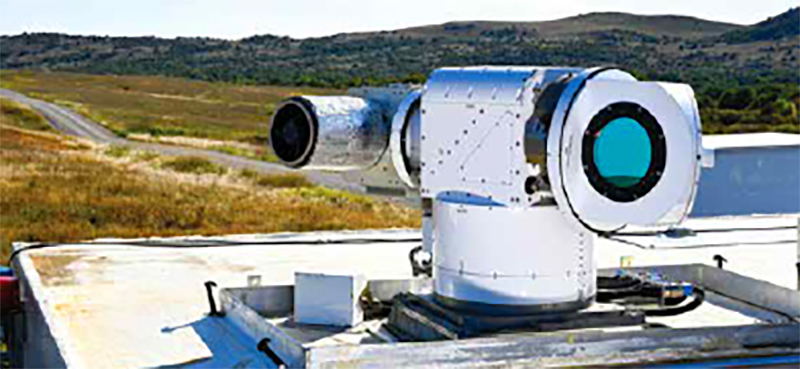Lockheed Martin recently demonstrated their laser weapon system for the U.S. Air Force at a government test range at Fort Sill, Oklahoma, where the system successfully engaged and shot down multiple fixed wing and rotary drones.
The Advanced Test High Energy Asset (ATHENA) operated in a fully-netted engage-ment environment with a government command and control (C2) system and radar sen-sor. The radar track was provided to airmen who operated ATHENA via cues from the C2, then ATHENA’s beam director slewed, ac-quired, tracked and defeated the drone with a high-energy laser.
Validating this type of full kill-chain per-formance has been a priority of the U.S. Air Force and other branches of the Department of Defense, and it remains a requirement for laser weapons to be effective against unmanned ae-rial systems (UAS) on the battlefield.
“We’ve watched in recent news this type of laser weapon solution is essential for de-terring unmanned vehicle type threats, so it’s an exciting time for us to watch airmen com-pete Lockheed Martin’s critical technology. ATHENA has evolved to ensure integration and agility are key and it remains an affordable ca-pability for the warfighter,” said Sarah Reeves, vice president of Missile Defense Programs for Lockheed Martin.
The ATHENA system was developed by Lockheed Martin to integrate seamlessly and provide a cost-effective, complementary an-ti-drone capability with the network of sys-tems the warfighter is already using. ATHENA was operated by USAF personnel during this demonstration, and it was able to destroy mul-tiple drones in engagements representative of what is being encountered by U.S. armed forc-es today.
The ATHENA high-energy laser system is transportable and therefore enables the Air Force to emplace it anywhere they need to de-fend bases and high-value assets.

